Many people’s diets include potatoes as a staple, as they are healthy and cost-effective foods. However, by learning some basics of the stages of potato growth, you could easily have some delicious potatoes growing in your backyard or patio in no time.
Potatoes begin as sprouts before photosynthesis (the process through which plants use light, water, & carbon dioxide to produce oxygen & energy as sugar) takes place. Then the plant forms tubers and flowers. The tuber continues to bulk up and grow to its full size, ready to be harvested.
Potatoes are one of the most rewarding crops to farm. From seeing their little eyes open and emerge from the dirt after planting to peering around the base of the plants for the first tubers to eventually harvesting a bumper crop of fresh potatoes. The entire process is impressive, whether it’s your first or 50th harvest.
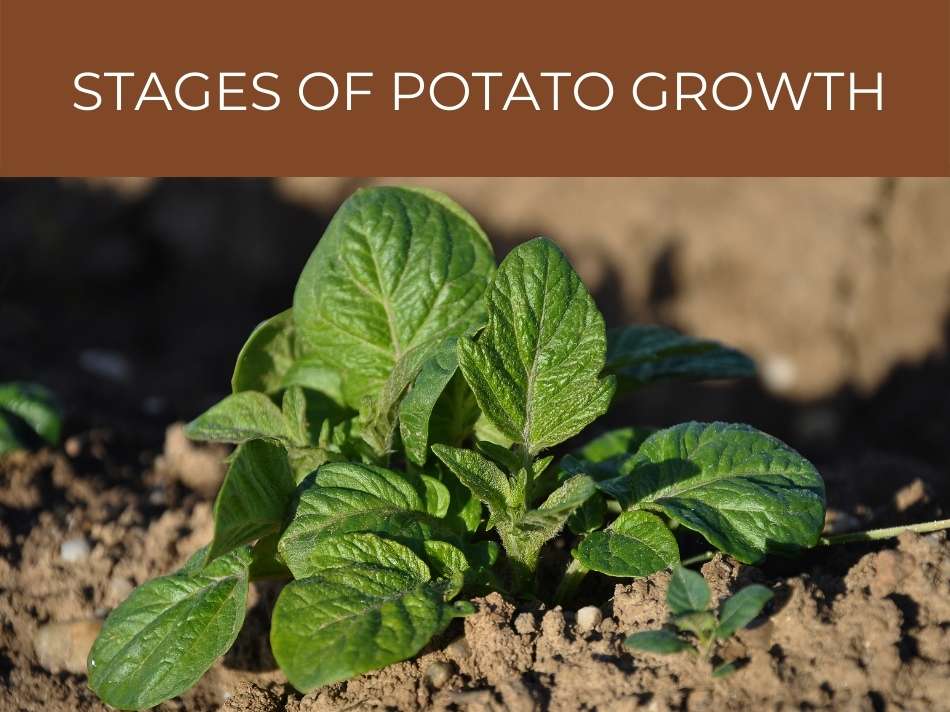
Stages of Potato Growth
Late potato types can be planted in the late summer and fall, allowing them to be harvested right before winter and stored for an extended period.
However, it’s crucial to remember that potatoes are cool-weather crops. Therefore, the best time to grow them is in the early spring.
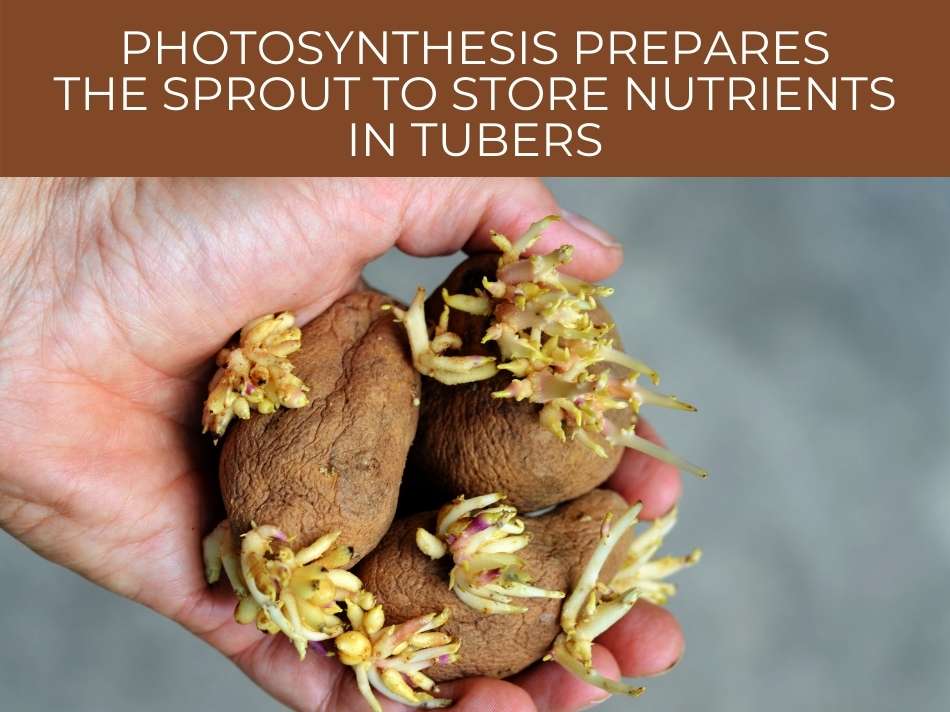
Photosynthesis prepares the sprout to store nutrients in tubers. Next, the tubers bulk up and grow before the plant flowers. Finally, the tuber skin toughens during maturity, prolonging storage life as sugars and carbohydrates build up in the body, ready for harvest.
With determinate kinds, the ‘no-dig’ approach, which entails just planting seed spuds on the surface of the soil and heavily mulching, works well.
Instead of growing tubers through the mulch, where they could be exposed to light, the potatoes will grow tubers on top of the earth.
The disadvantage of this straightforward strategy is that if you don’t keep the mulch thick enough, you’ll end up with green produce.
See how many potatoes one plant can produce.
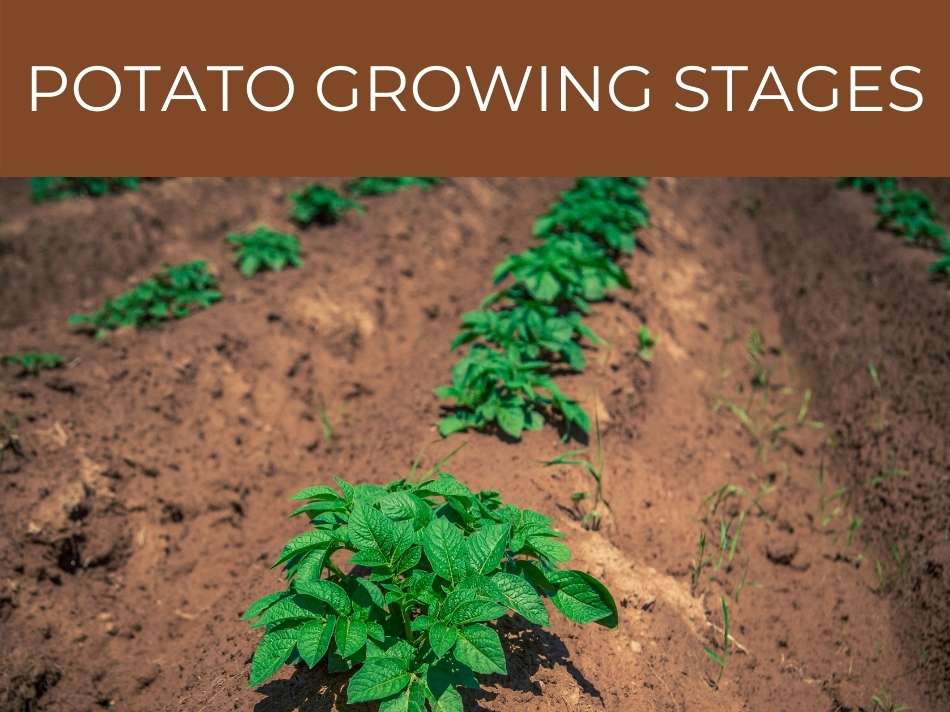
Potato Growing Stages
Potatoes want a soil that is rich, thoroughly dug, wet, and acidic with a pH of less than 6.
They do not thrive in hard clay or limed soil, which encourages potato scabs, therefore always rotate your potato patch each year to avoid this.
Here are the 4 stages of potato growth:
- Sprouting begins, & shoots emerge in 15-30 days.
- Tubers form after 15-30 days.
- Tubers fill out 45-90 days after emergence. Flowers grow during this stage.
- It takes 90-120 days for a potato seed to grow into a mature potato plant ready to harvest.
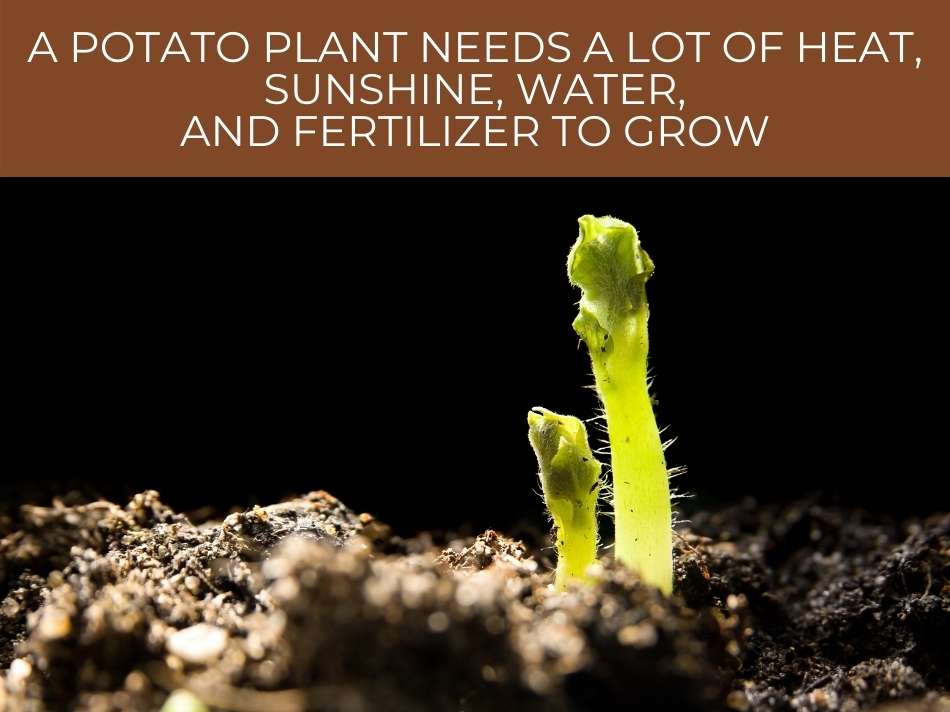
A potato plant needs a lot of heat, sunshine, water, and fertilizer to grow.
Like most other crops, potatoes have a season when they are better able to grow and thrive.
Knowing the optimum month to plant potatoes so that you may get the most outstanding potential results is vital.
Early potato types should be sown in the early spring and harvested promptly.
Mid-season potato types can be planted from the middle of spring until the beginning of summer.
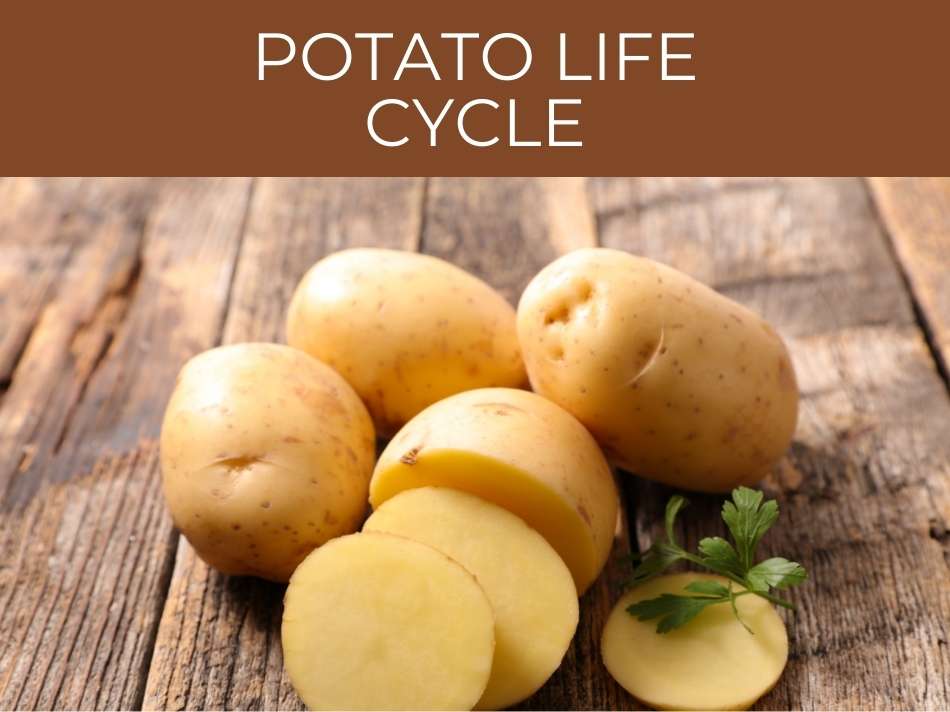
Potato Life Cycle
The potato has a relatively short life cycle of 70 to 150 days. Tuber sprouting, vegetative development, tuber initiation, tuber bulking, and eventually plant deterioration are all part of its developmental stages. Each process is influenced by day length, temperature, and drought stress.
Sprouts are the initial stage of a potato plant’s life cycle.
They appear as little white pimples on potatoes that have been stored for an extended period.
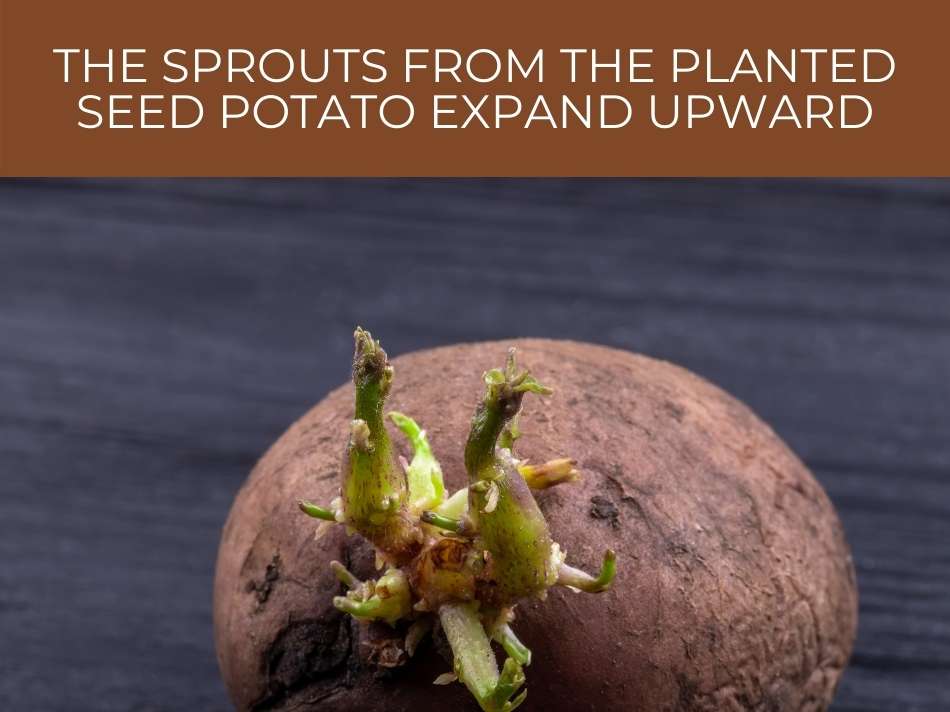
The sprouts from the planted seed potato expand upward and finally push above the soil’s surface.
Find out the best soil to grow potatoes.
The potato plant develops its underground structure, including stems, branches, and leaves, during the first stage of its vegetative development cycle.
The plant’s root system is also developing, as the horizontal root shoots are known as stolons, from which new tubers will arise.
The blooms produce tiny, tomato-like fruits with seeds that are not edible and are not commonly used in potato plant cultivation.
The plant devotes most of its energy to developing new tubers at this stage.
Water, carbohydrates, and nutrients accumulate in the tuber cells with tubers growing drastically in size as the cells inflate.
Sugars in the tubers convert to starch during the mature stage, a significant source of nourishment for the following year’s plants.
The plant dies after this stage. Photosynthesis in the leaves and tubers slows down and eventually stops altogether.
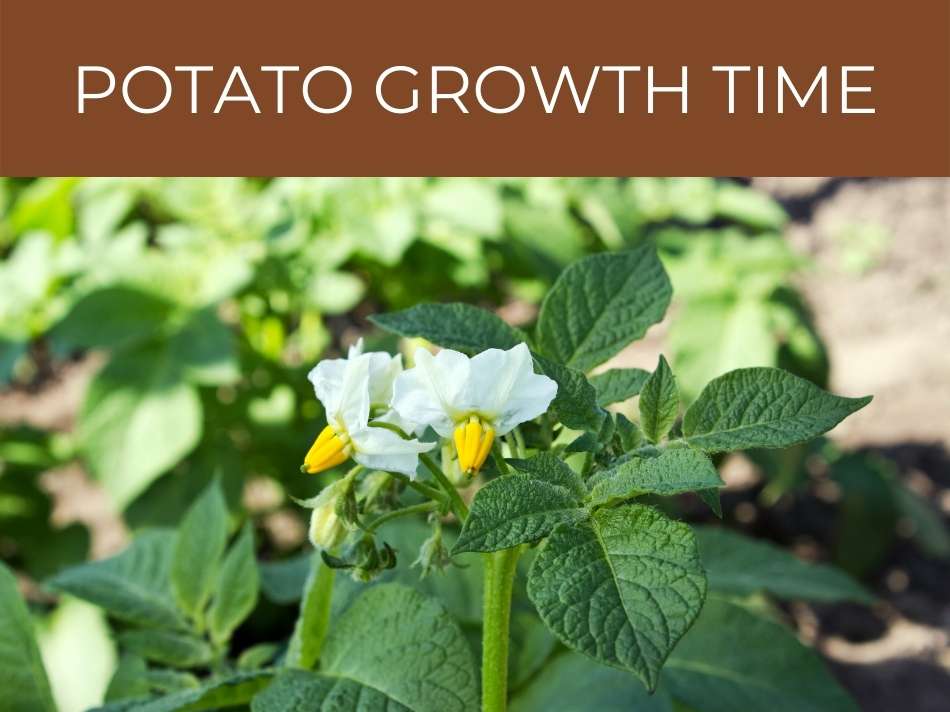
Potato Growth Time
To be effectively harvested, potatoes must be frost free for 60 to 90 days; potatoes picked early as ‘fresh’ potatoes do not store well.
The best time for the potato growing cycle is between spring and summer. You should also ensure that the potatoes are adequately watered, with the soil wet but not saturated.
Ensuring that all the growth circumstances are ideal will aid the plant in producing more potatoes.
Determinate potatoes need around 70 to 90 days to yield a harvest and are less prolific than more indeterminate varieties, which produce tubers in roughly 80 to 120 days.
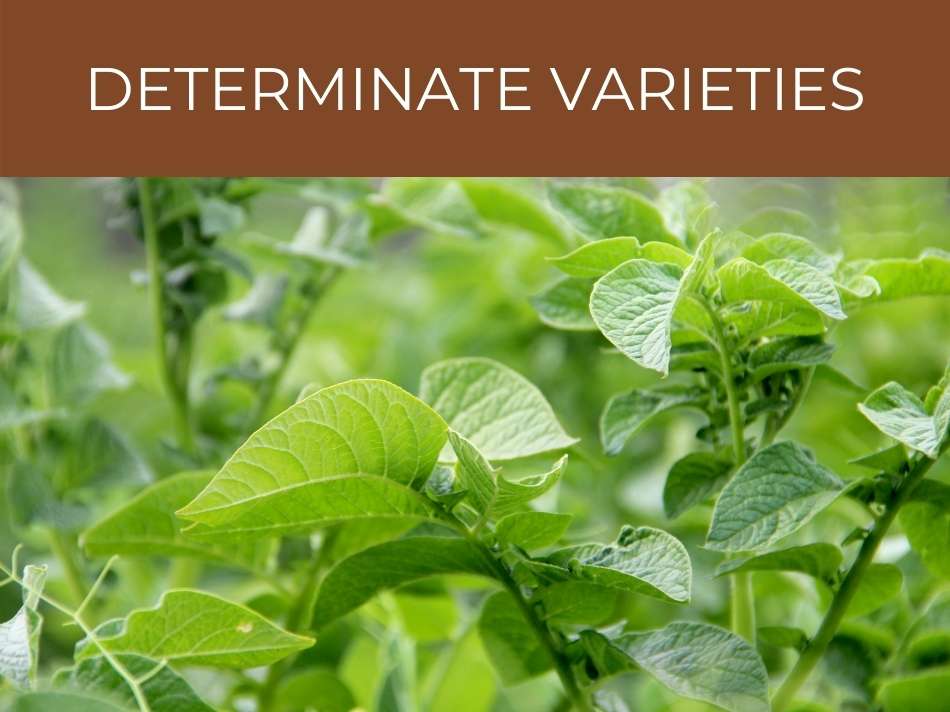
Determinate Varieties
These varieties develop tubers in a single layer just below the soil surface, eliminating the need for soil mounding around them.
As a result, they are less prolific than indeterminate varieties, although they yield spuds sooner.
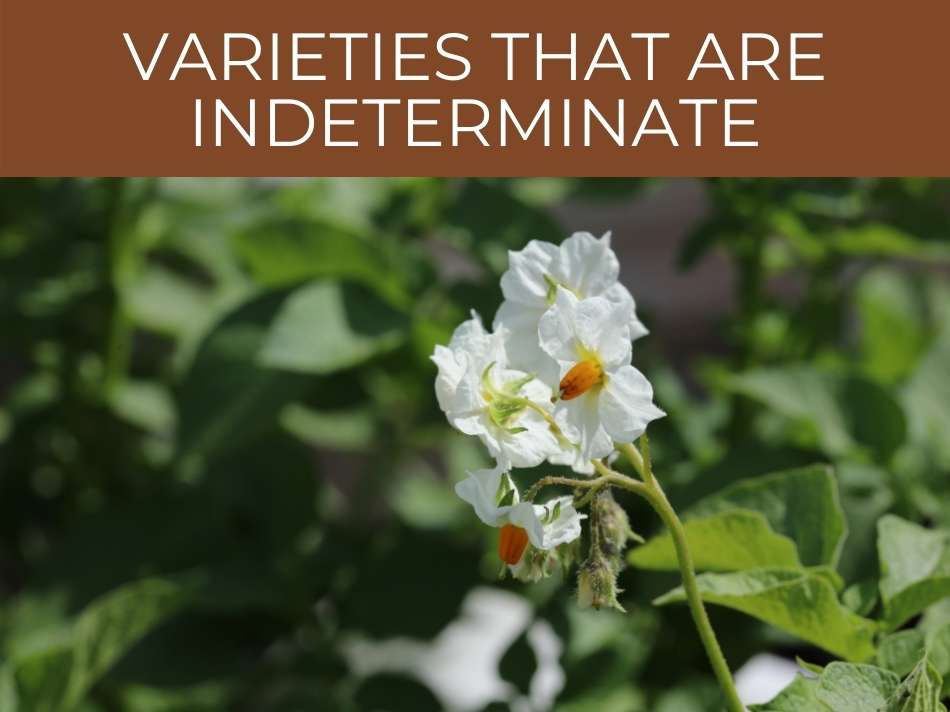
Varieties That Are Indeterminate
Because these plants develop tubers in many layers, it’s critical to maintain mounding the surrounding soil to maximize output and support the plants.
They’re a superb option for growing potatoes in a tire tower or potato bag.
Planting potato plants on hills is a fantastic method to try if you want to boost the number of potatoes per plant.
As potatoes grow underground at the plant’s base, assisting in their support will safeguard their growth and enable more of them to grow.
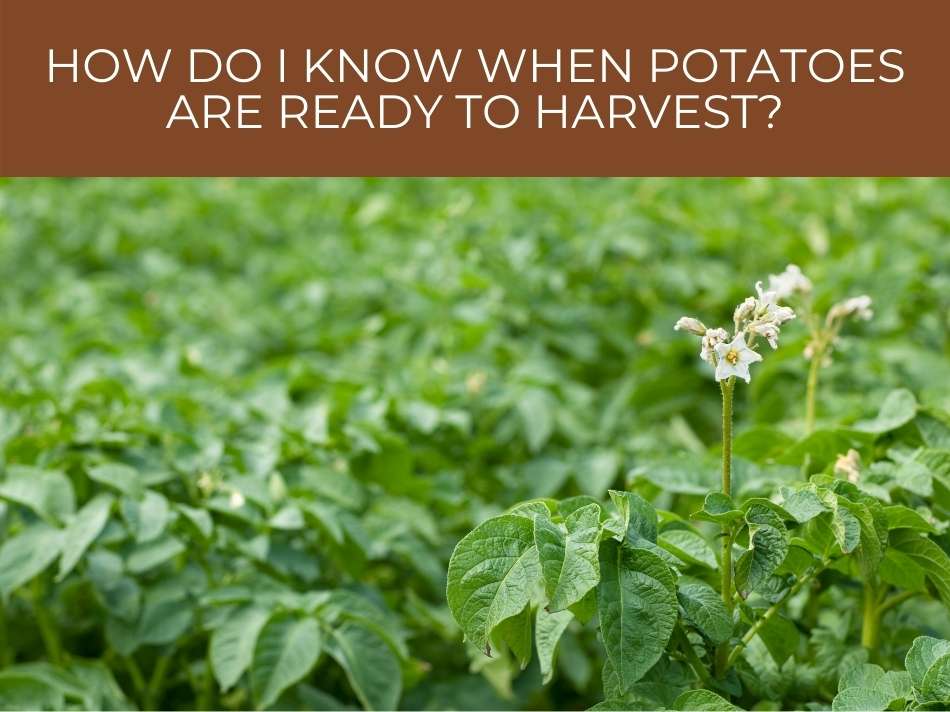
How Do I Know When Potatoes Are Ready To Harvest?
Potatoes are ready to harvest after most of the tops have faded, which can take 12 to 20 weeks, depending on the variety. Early potatoes can be picked for consumption but must be developed entirely for storing.
You’ve planted early, carefully hilled, cultivated, and fertilized your crops.
As a result, your potato plants are flourishing.
However, you’re now wondering when to harvest the potatoes you’ve been diligently tending. Knowing how to harvest potatoes can ensure you get the most out of your produce.
Be cautious not to scratch, bruise, or cut the tubers as you dig, as tubers that have been damaged may decay in storage and should be used as soon as possible.
When deciding when to dig, consider the air and soil temperatures.
Potatoes may withstand a mild frost, but it’s time to get the shovels out when the first heavy frost is on the way.
Soil temperature will decide when you should pick potatoes in locations where the fall is cool, and there is no frost.
The temperature of your soil must be above 45 degrees Fahrenheit (7 C.).
See our complete guide to harvesting potatoes.
You’ll need a shovel or a spading fork to gather potatoes to drive into the dirt at the plant’s exterior margins.
If you’re harvesting for supper, lift the plant carefully, remove the potatoes you want, replace the plant in its original location, and give it plenty of water.


